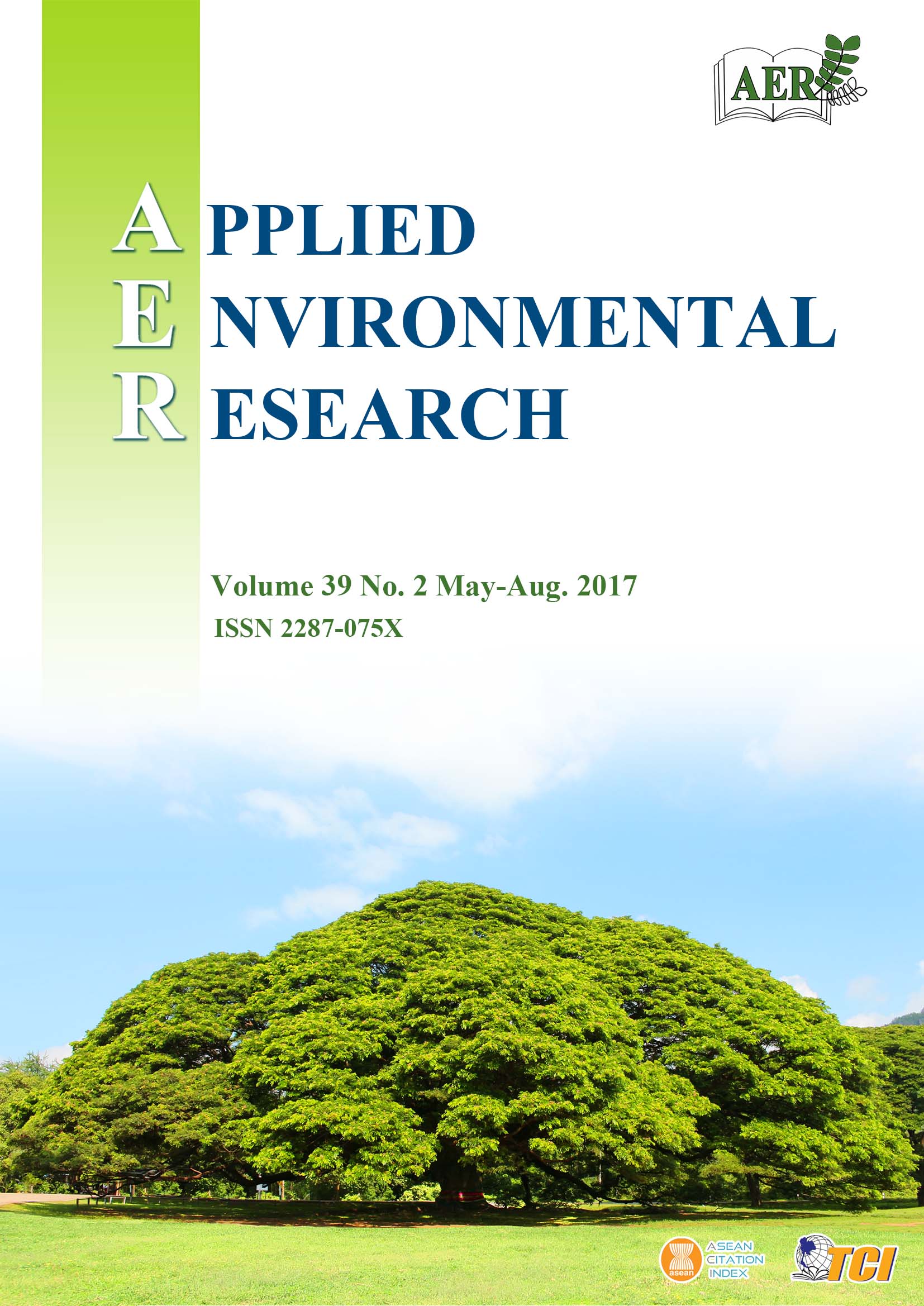Kaolin Modified Nano Zero Valent Iron Synthesis via Box-Behnken Design Optimization
Main Article Content
Abstract
Nano zero valent iron (NZVI) has been extensively studied for its application to treat pollutants, particularly in contaminated water. This research studies enhancement of the reducing power of NZVI using kaolin as a supporter and ethanol as a medium. Kaolin modified nano zero valent iron (K-NZVI) was synthesized under three different parameters including ethanol content (0-100 v %), ratio of kaolin to NZVI (0-1.5), and dropping rate of NaBH4 (4-10 mL min-1). The Box-Behnken Design was used to design the experimental conditions, and Reactive Red 120 was used as an organic pollutant probe to quantify the reducing power of the synthesized K-NZVI. The results revealed that the highest reduction potential of K-NZVI was found under the following conditions: ethanol content of 100 v %, kaolin to NZVI ratio of 0.75, and NaBH4 dropping rate of 7 mL min-1. Based on these optimal synthesized conditions, the smaller crystal size of NZVI as measured from X-ray diffraction peaks, led to more efficient reduction of RR120. Images from scanning electron microscopy revealed that Fe was distributed uniformly over the surface, while the particles found in synthesized K-NZVI were mainly iron (Fe) and oxygen (O).
Article Details

This work is licensed under a Creative Commons Attribution-NonCommercial 4.0 International License.
Published articles are under the copyright of the Applied Environmental Research effective when the article is accepted for publication thus granting Applied Environmental Research all rights for the work so that both parties may be protected from the consequences of unauthorized use. Partially or totally publication of an article elsewhere is possible only after the consent from the editors.

